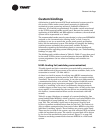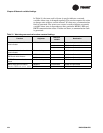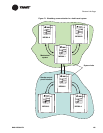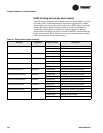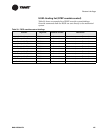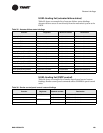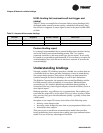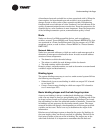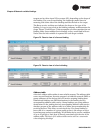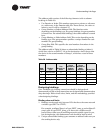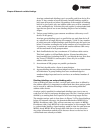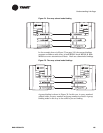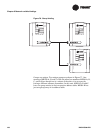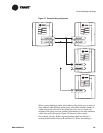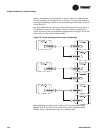
Understanding bindings
BAS-APG001-EN 131
A heartbeated network variable has a timer associated with it. When the
timer expires, the heartbeated network variable is sent regardless of
change of state or delta value of that network variable. Heartbeating
functions both as an indicator of value “freshness” and an indicator of the
quality of communications between two devices. From the perspective of a
terminal device, value freshness is most important. From the perspective
of the building automation system, communication quality is most
Node
Nodes can be any LonTalk-compatible devices, such as appliances,
switches, sensors, Tracer MP581s, and Tracer Summit BMTX BCUs, that
are connected to a Trane LonTalk network. For the purposes of a UUKL-
compliant system, a node is either a Tracer MP581 or a Tracer Summit
BMTX BCU.
Network Address
Nodes have network addresses, which are used to send messages and to
determine if messages are destined for them. A node’s network address
consists of three components:
• The domain to which the node belongs
• The subnet to which the node belongs within the domain
• The node number within the subnet
Domain, subnet, and node number are used to determine a custom bound
variable’s origin and destination(s).
Binding types
The custom bindings necessary to use in a smoke control system fall into
the following two categories:
• Subnet/node: A one-to-one binding in which one output NV is bound
to one input NV.
• Group: A one-to-many binding in which one output NV is bound to
two or more input NVs.
Basic binding shapes and the hub/target system
A one-to-one binding is always a subnet/node binding type. A binding
with a fan-out shape is always a group binding type. A binding with a fan-
in shape is always made up of several subnet/node bindings. Fan-in and
fan-out bindings can have an unlimited number of members. Custom fan-
in bindings are not necessary for the smoke control system. The target
network variable will change value depending on which output network
variable was last sent. There is no way to determine the origin of the
information.
Echelon uses a hub/target system to describe the parts of a binding. As
the term implies, there can be only one hub in a binding. The hub is the
focal point of either a fan-out or fan-in binding. The targets are at the
other end of the hub. It is important to remember that the hub and



